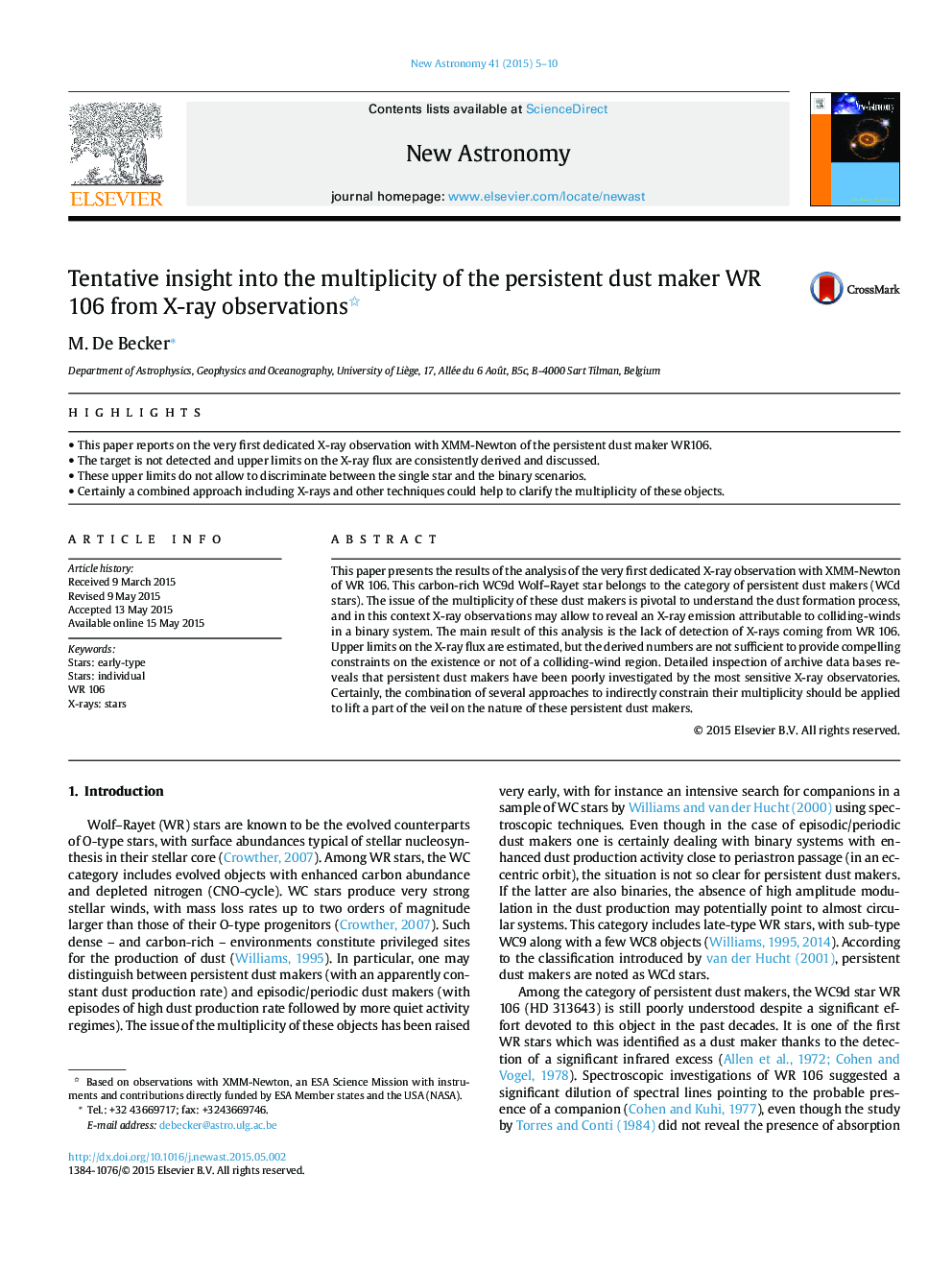| Article ID | Journal | Published Year | Pages | File Type |
|---|---|---|---|---|
| 1778746 | New Astronomy | 2015 | 6 Pages |
•This paper reports on the very first dedicated X-ray observation with XMM-Newton of the persistent dust maker WR106.•The target is not detected and upper limits on the X-ray flux are consistently derived and discussed.•These upper limits do not allow to discriminate between the single star and the binary scenarios.•Certainly a combined approach including X-rays and other techniques could help to clarify the multiplicity of these objects.
This paper presents the results of the analysis of the very first dedicated X-ray observation with XMM-Newton of WR 106. This carbon-rich WC9d Wolf–Rayet star belongs to the category of persistent dust makers (WCd stars). The issue of the multiplicity of these dust makers is pivotal to understand the dust formation process, and in this context X-ray observations may allow to reveal an X-ray emission attributable to colliding-winds in a binary system. The main result of this analysis is the lack of detection of X-rays coming from WR 106. Upper limits on the X-ray flux are estimated, but the derived numbers are not sufficient to provide compelling constraints on the existence or not of a colliding-wind region. Detailed inspection of archive data bases reveals that persistent dust makers have been poorly investigated by the most sensitive X-ray observatories. Certainly, the combination of several approaches to indirectly constrain their multiplicity should be applied to lift a part of the veil on the nature of these persistent dust makers.
